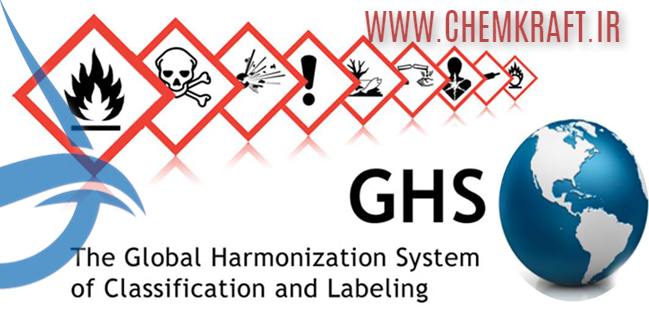UNITED NATIONS GLOBALLY HARMONIZED SYSTEM (GHS) FOR CAUSTIC SODA FLAKES
UNITED NATIONS GLOBALLY HARMONIZED SYSTEM (GHS) FOR CAUSTIC SODA FLAKES: ENSURING GLOBAL SAFETY AND AWARENESS
Hossein Moshiri
Introduction:
GHS for Caustic Soda: The United Nations Globally Harmonized System of Classification and Labelling of Chemicals (GHS) represents a landmark initiative aimed at standardizing the classification and labeling of chemicals globally. This system provides a comprehensive framework for communicating information about the hazards of chemicals, facilitating international trade, and promoting a unified approach to chemical safety. In this essay, we will delve into the specific application of the GHS to caustic soda flakes, a widely used chemical with diverse industrial applications.
Caustic Soda Flakes: Overview and Applications:
Caustic soda, or sodium hydroxide (NaOH), is a fundamental chemical with a broad range of applications across industries. In its flake form, caustic soda is a versatile product with uses in manufacturing, textiles, pulp and paper production, and various chemical processes. The adoption of the GHS for caustic soda flakes is instrumental in ensuring that information about its hazards and safe handling practices is globally standardized, fostering a safer working environment and facilitating international trade.
Key Principles of the GHS:
The GHS is founded on several key principles designed to enhance the safety of chemical handling, transportation, and use on a global scale. These principles include:
- Harmonization of Classification Criteria:The GHS harmonizes the criteria used to classify chemicals based on their physical, health, and environmental hazards. This standardization ensures that the same set of rules is applied universally, avoiding discrepancies in the classification of substances.
- Standardized Hazard Communication:The GHS provides a standardized system for labeling chemicals and creating safety data sheets (SDS). This uniform approach enhances the comprehension of hazard information, irrespective of the geographic location or language.
- Global Standardized Labeling Elements:GHS labels include standardized elements such as pictograms, signal words, hazard statements, and precautionary statements. These elements contribute to a clear and consistent representation of the hazards associated with a chemical.
- Risk and Safety Phrases:The GHS introduces standardized risk and safety phrases to convey concise information about the nature and severity of chemical hazards. This allows for quick and accurate communication of risks associated with caustic soda flakes.
See also Sustainability Initiatives by Leading Caustic Soda Producers
GHS Application to Caustic Soda Flakes:
**1. Classification of Caustic Soda Flakes:
- The GHS classifies chemicals based on their inherent hazards. Caustic soda flakes are typically classified as corrosive to metals and skin, and they may cause serious eye damage. The classification ensures that individuals handling caustic soda flakes are aware of the potential risks and can take necessary precautions.
**2. Labeling Requirements:
- GHS labels for caustic soda flakes prominently display standardized pictograms, such as the corrosion symbol, to indicate specific hazards. Signal words like “Danger” convey the severity of the risks associated with the chemical. Additionally, hazard statements and precautionary statements provide detailed information for safe handling.
**3. Safety Data Sheets (SDS):
- The GHS mandates the creation of Safety Data Sheets (SDS) for caustic soda flakes. These sheets contain comprehensive information about the chemical, including its properties, hazards, safe handling practices, and emergency response measures. SDS sheets follow a standardized format, ensuring consistency and ease of use globally.
**4. Training and Awareness:
- The GHS emphasizes the importance of training and raising awareness among workers, emergency responders, and the general public. For caustic soda flakes, this means ensuring that individuals are adequately trained to understand GHS labels, SDS information, and the necessary precautions when handling the chemical.
GHS for Caustic Soda
Benefits of GHS Implementation for Caustic Soda Flakes:
**1. Global Trade Facilitation:
- The GHS facilitates international trade by providing a common language for communicating chemical hazards. This is particularly crucial for caustic soda flakes, which are widely traded commodities used in various industries across the globe.
See also AMAI: Domestic demand for caustic soda up by 4.2% to 41.38 Lakh MT in 2022-23
**2. Enhanced Safety Practices:
- The standardized hazard communication elements of the GHS contribute to enhanced safety practices. Workers handling caustic soda flakes can quickly and accurately understand the risks involved, leading to more effective risk mitigation strategies.
**3. Emergency Response Effectiveness:
- In the event of an emergency, such as a spill or exposure, emergency responders can rely on GHS information to assess the situation and take appropriate measures promptly. This contributes to a more effective and coordinated emergency response.
**4. Improved Risk Management:
- The GHS aids companies in implementing robust risk management practices. By clearly communicating hazards associated with caustic soda flakes, companies can develop and implement safer handling procedures, reducing the likelihood of accidents and injuries.
GHS for Caustic Soda
Challenges and Considerations:
While the GHS brings numerous benefits to the safe handling of caustic soda flakes, there are challenges and considerations that must be addressed:
**1. Variability in Production Processes:
- Caustic soda flakes can be produced through different methods, and variations in production processes may introduce impurities or other factors that affect hazard classification. Standardizing production processes is crucial for maintaining GHS compliance.
**2. Regional Regulatory Differences:
- While the GHS aims to harmonize hazard communication globally, regional variations in regulatory requirements may still exist. Producers and users of caustic soda flakes must stay informed about regional adaptations of the GHS.
Conclusion:
The adoption of the United Nations Globally Harmonized System (GHS) for caustic soda flakes represents a pivotal step toward enhancing global chemical safety and communication. By providing a standardized framework for classification, labeling, and safety data sheets, the GHS ensures that individuals worldwide can handle caustic soda flakes with a clear understanding of associated hazards and appropriate precautions. As caustic soda continues to play a vital role in various industries, the GHS serves as a cornerstone for fostering a safer and more harmonized global chemical landscape.
Hossein Moshiri
WA +989124311007
Source: https://chemkraft.ir/en/ghs-for-caustic-soda/
Comments
Post a Comment